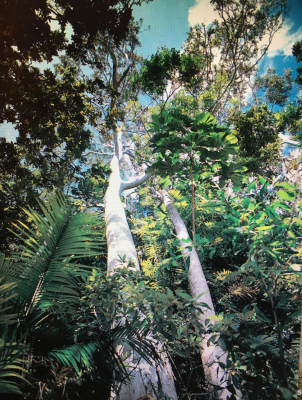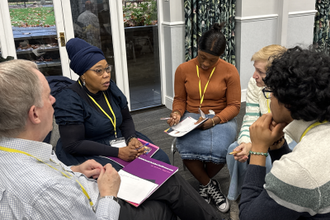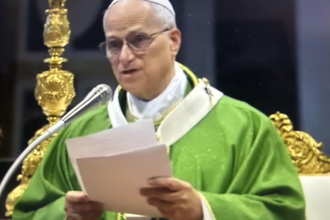Amazonia Synod: A cause for great joy

As the dawn of 2020 emerges, it is propelled with an energy released from the Catholic Church's Synod on the Amazon that took place in October 2019. More than event, it was and continues to be a process that formally began on January 19, 2018, pronounced by Pope Francis in the southeastern Peruvian town of Puerto Maldonado, considered a kind of gateway into the southern Amazon region.
Fr Peter Hughes, SSC, a noted theologian in Latin America on the social doctrine of the Church and member of the preparatory committee and participant of the Synod, described the Synod this way,
"The Synod marks a turning point, a before and after of the Church. It is a ray of light that affirms hope in a time of great darkness. This current historical moment is full of storm clouds that prevent us from seeing the way forward with clarity. The synodal conversion is an invitation to embrace with passion the way of God which is given to us in this moment."
A Columban missionary in Peru for five decades and former Executive Secretary for Justice, Peace, and Development of CELAM, the collegial council of Latin America Bishops, Peter has dedicated his life to hearing the cry of the Earth and cry of the poor and turning that listening into transformative healing and change.
Referencing Psalm 93, "the rivers have raised up the Lord, the rivers have raised up their voice" Fr Peter places at the heart of the synodal process the great and inclusive dialogue of integral ecology - the dialogue between the human and non-human natural world in which the voice of the great rivers of the Amazon is transformed from object to subject. This is one of the most significant dimensions of the synodal process - that is an expanded understanding of voice and, indeed, that all of creation has a voice which must be included in the chorus of longing and praise for God.
Fr Peter has summarised other key elements of the Synod to include:
The People of God and their voice breakthrough, which can be heard as the voice of the Holy Spirit calling from their Amazonian territory.
Walking together inclusively, and especially with the most marginalised, as a journey of building a dignified life for all.
A dynamic, participatory and creative Church that reasserts the memory of Jesus in the current context of the Amazon, with its cultures, spiritualities, and understanding of the transcendent.
Women and Indigenous peoples have a new kind of leadership to offer the Church and their voice could be heard throughout the synodal process.
A Church with and for the poor is a Church that moves to and inhabits the periphery which becomes transformed as the new centre. The Amazon Synod was a real gesture of decolonialisation of the Church itself.
Our Common Home and Common Church is real and could be felt and visibly seen during the Synod through song, dance, ritual, art, food, traditional clothing and was captured in the conclusion of the Synod with the Pact of the Catacombs for our Common Home, which evoked the Vatican II Pact of the Catacombs for the Poor and Servant Church in 1965.
These notable dimensions of the synodal process give witness and hope for future synods, and even beyond the Church in UN processes like the upcoming Conference on Biodiversity and the COP26 Climate Conference in the UK. Taking as reference point the Amazon Synod, we can imagine processes that break the patterns and norms of old. We can make space for creativity to guide how we engage in inclusive and participative dialogue. We can design interdisciplinary and multi-voice dynamics when seeking paths for systematic commitments for transformation that open the way for healing.
Looking forward, Fr Peter points to three key focal points: Conversion, Commitment, and Place. Of conversion he writes: "Conversion is to open oneself to new decisions and perspectives that lead to building new paths. The securities and comforts of the past have to give way to the unknown, to a map that cannot be made in advance."
When considering Commitment, Fr Peter emphasises a prophetic church, noting that the concluding document of the Synod contains more than 200 concrete commitments that among other things challenges the destructive forces of extractivism. A prophetic Church is an active church that rejects the grips of death and promises new life.
Finally, of Place, Fr Peter reminds us that all Church is local, particular, contextual, and dynamic according to cultural, socio-political and economic realities, geographical contours. As such, any future synodal process must embrace the Church of Place. That is, for example, a Synod on Oceania would look very different than the Synod on the Amazon in terms of process, themes, priorities and so on. That said, the learnings from the Amazon Synod can certainly inspire and contribute to a design that is wholly specific and universal at the same time.
One of Pope Francis' desires for the Amazon Synod was to universalise the Amazon - that is, for the world in all its diverse biomes and ecclesial homes to discover for itself - through dialogue, discernment, and dreaming - a new path for integration in which spirit, space, and species cohabitate in harmony and solidarity that extends throughout the world. Whether future synodal processes in other territories of the world, or UN processes - as people of faith, we bring with us our continual hope that not only is the kingdom yet to come, but is very much with us right now.
Let me conclude with Peter' words: "The Synod on the Amazon is cause for great joy, to give thanks, and to praise God for having given us, guided by the Holy Spirit, this grand ecclesial moment, not only for the Amazonian Church but for the universal Church."
This is the final Columban article on October's Synod on Amazonia in the series, Synod on the Amazon: Model for the World. The author is the Washington-based Columban International JPIC Coordinator.
All articles in the series available at - http://columbancenter.org/Synod-on-Amazon-Model-for-World


















